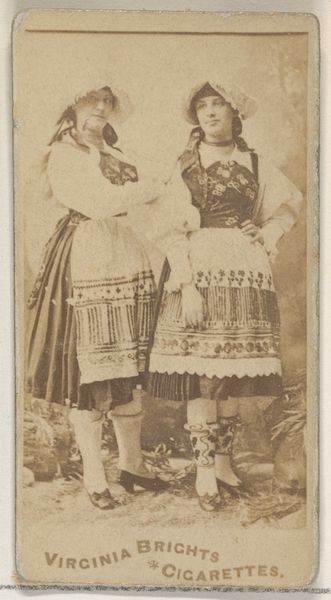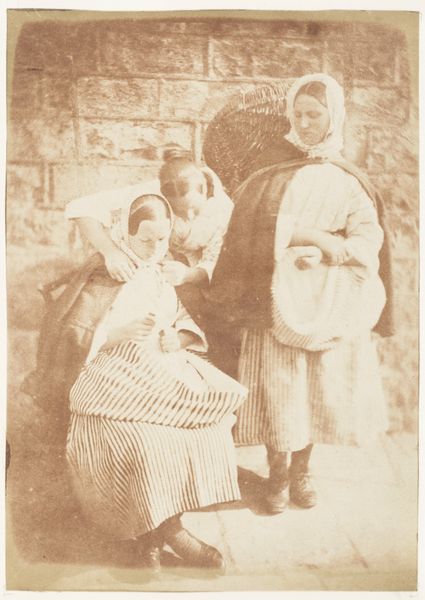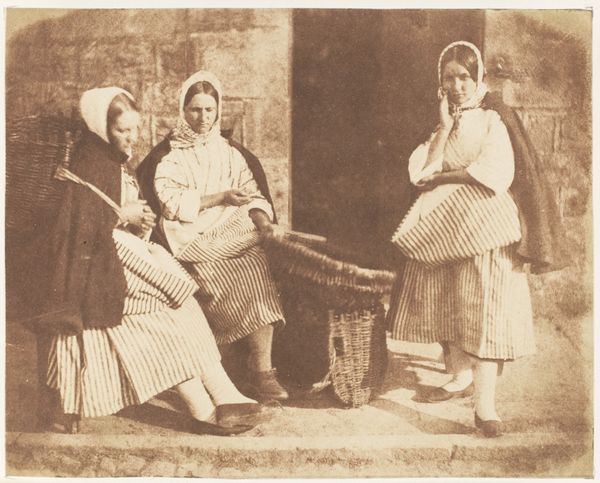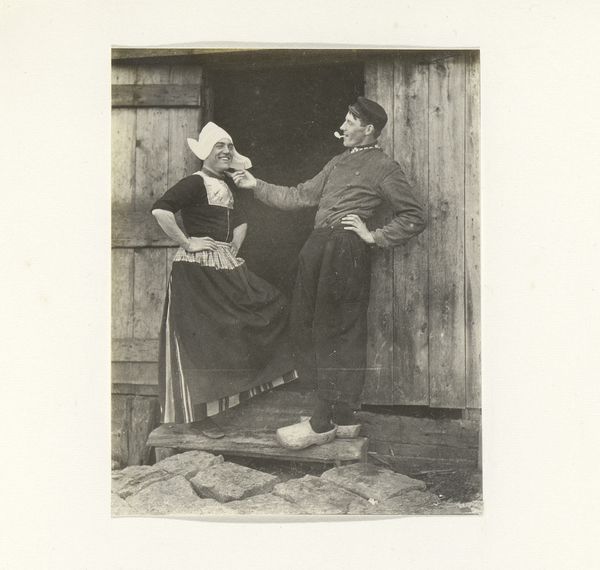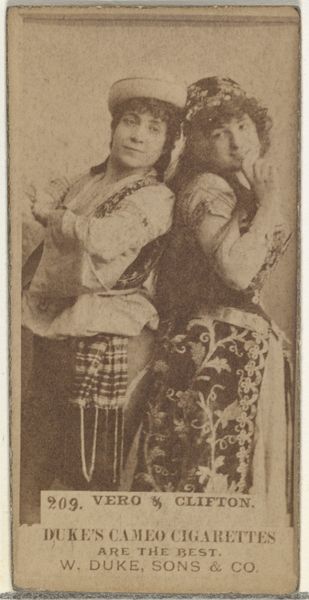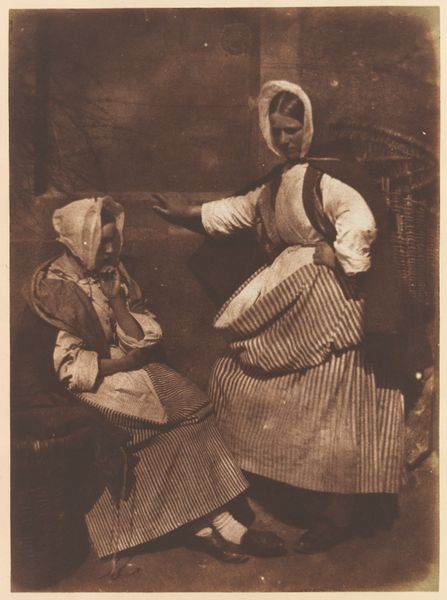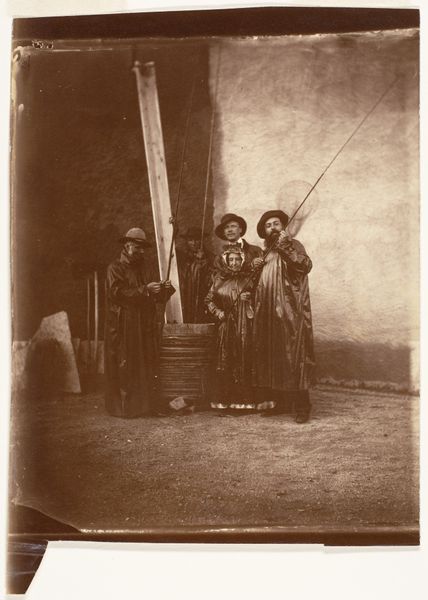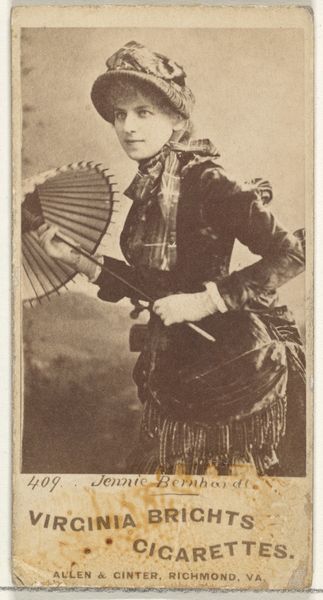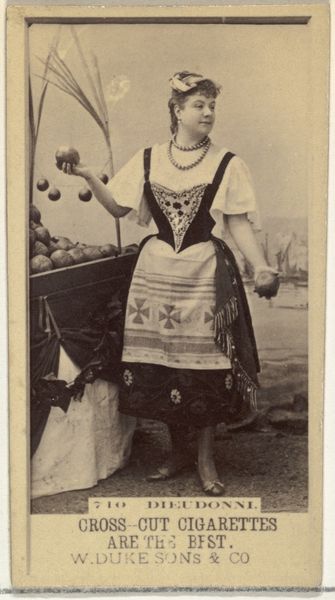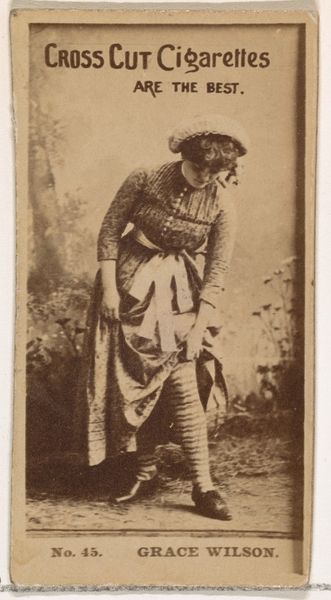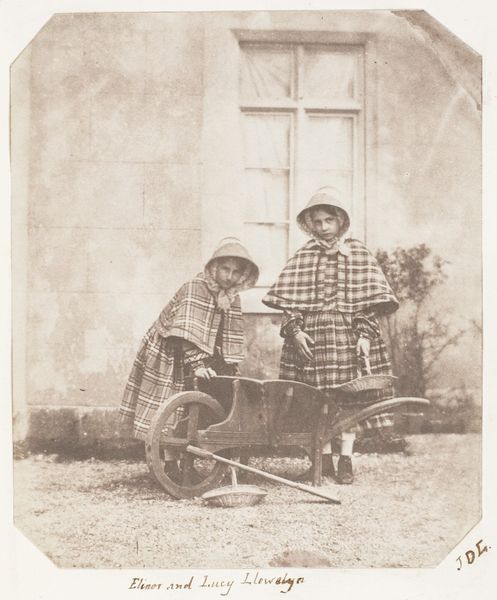
photography, gelatin-silver-print
#
portrait
#
still-life-photography
#
photography
#
historical photography
#
portrait reference
#
group-portraits
#
romanticism
#
gelatin-silver-print
#
19th century
Copyright: Public Domain
Editor: Hill and Adamson's "Newhaven Fishwives," dating from the 1840s, is striking in its simplicity. I'm fascinated by the baskets, the fabric of their clothes, and how they represent everyday work, elevated almost to the level of fine art. How can we really dig deeper here? Curator: The details you point out—the baskets, the fabric—are vital. Consider the production and use of these items. Woven baskets suggest local craftsmanship, directly linked to the fishwives' trade and the resources available to them. Can you envision the labor that went into both the fishing industry and the production of clothing worn by working class women? Editor: Absolutely! The rough, woven texture of the baskets implies the physical demands of their labor, not so different from the heavy twills of their garments. I'm getting a strong sense of connection to process and materials used in both creating art and creating clothing of the time, can we say more about it? Curator: This is exactly right. The materiality here forces us to acknowledge the socio-economic circumstances of the women portrayed, right? The gelatin-silver print medium also raises interesting questions. How did photography's relatively new ability to record detail shape perceptions and representations of working-class life during that period? Editor: Good point. I wonder how conscious Hill and Adamson were of aestheticizing everyday labour. Was it exploitative, a genuine document, or somewhere in between? Curator: That's precisely the kind of question we should be asking. By emphasizing the means of production – the photographer's materials and process and the work/life materials of the women depicted, such as their garb and implements of labour – we shift from idealized representation to a more critical understanding. Editor: I hadn't considered all these elements that tie the art to its historical context through labor and means of production! The connection between high art and working-class craft becomes clear through that kind of thinking. Thanks. Curator: My pleasure. Now you're really seeing the weave in art's tapestry, from the thread up!
Comments
No comments
Be the first to comment and join the conversation on the ultimate creative platform.
